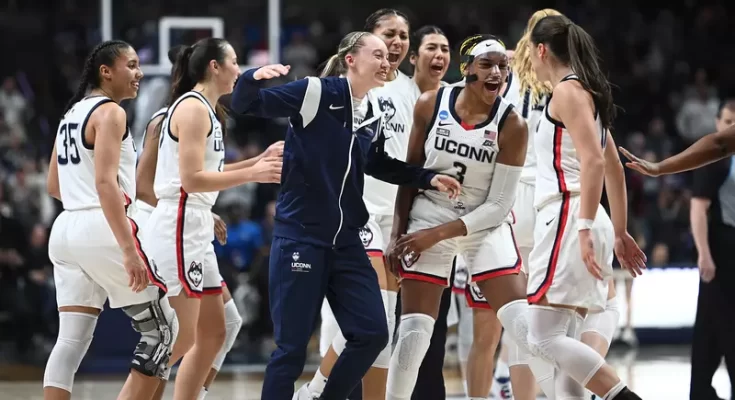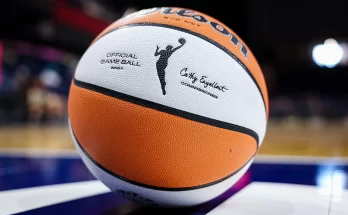Defense is crucial in women’s college basketball. Why is it so powerful? Let’s dive in and explore how great defensive strategies can turn the tide of the game.
Key Takeaways
- Importance: Effective defense can determine the outcome of a basketball game.
- Skills and Techniques: Includes footwork, positioning, and agility.
- Team Defense: Success relies on communication and teamwork.
- Transition and Rebounding: Quick transition and strong rebounding are vital.
Defensive Strategies in Women’s College Basketball: An Answer to Winning
Playing defense is not just about stopping the other team from scoring. It’s about controlling the game. Let’s see how defense has evolved in women’s college basketball and explore its impact on teams like the University of Connecticut.
Evolution and Unique Challenges
Defense in women’s basketball has changed over the years. Women’s teams face their own set of challenges, like adjusting defensive techniques to meet the physicality and speed of their opponents.
Impact on Game Outcomes
Do you know how often the University of Connecticut wins because of their defense? Their strategy focuses on shutting down opponents and creating turnovers, leading them to multiple national titles.
Individual Defensive Skills and Techniques
Great athletes master basic skills first. Here’s what individual players focus on:
Footwork
Strong footwork is essential. Techniques like close-out and drop step help players stay with their opponents. Practice with footwork drills such as ladder work or cone drills to enhance speed and precision.
Positioning and Spatial Awareness
Players need to maintain good positioning by using angles and anticipation. They should focus on staying between their opponent and the basket.
Hand Usage
Using hands effectively can disrupt shots and passes. Why not mix in some hand usage drills into practice?
Adapting to Different Player Types
Guarding a quick guard is different from defending a tall post player. Players must adapt accordingly.
Improving Agility and Stamina
Players need drills that improve agility and stamina, like shuttle runs and sprints, to keep up defensively.
Team Defensive Concepts and Execution
Team defense isn’t just about individual skill. It’s about everyone working together.
Man-to-Man Defense
Every player takes responsibility for guarding a certain opponent. It’s versatile but requires quick reflexes.
Zone Defense
Players cover areas instead of specific players. Do you think this might catch your opponents off guard?
Combination Defenses
Mixing man-to-man and zone can confuse the offense, making it difficult for them to find open shots.
Communication and Teamwork
Players must talk and listen on the court. Simple drills can improve this, focusing on communication and recovery.
Transition Defense
Switching from offense to defense quickly is crucial.
Key Principles and Strategies
Quick transition can stop easy baskets. Do players know to identify and stop the ball handler first?
Drills for Transition Defense
Practicing 3-on-2 and 2-on-1 situations can boost awareness and speed.
Defensive Rebounding
Rebounding isn’t just about being tall. It’s about technique.
Techniques for Effective Boxing Out
Boxing out is key for preventing second chances. Reinforce this by practicing boxing out drills.
Team-Oriented Strategies
Encourage “gang rebounding,” where everyone works together to grab the ball.
Drills to Enhance Skills
Conduct drills like “Box-Out Battle” or “Rebounding Relay” to improve these skills.
Defensive Play Calling and In-Game Adjustments
Understanding opponent strategies helps in making smart defensive calls.
Scouting Reports and Preparation
Use scouting reports for insights on the opponent’s strengths and weaknesses. Watching films helps prepare for varied strategies.
In-Game Adjustments
Adjust defensive strategies based on the game’s flow. Communication is key here.
Mental Aspects of Defensive Play
Defense isn’t purely physical; it’s mental, too.
Maintaining Focus and Discipline
Players should stay mindful and disciplined. Simple techniques, like visualization and self-talk, build mental toughness.
Psychological Impact on Success
Maintaining focus and being mentally prepared increases the likelihood of consistent defensive success.
Advanced Defensive Metrics and Analytics
Using stats helps teams evaluate their defense.
Understanding Defensive Efficiency
Look into metrics like defensive efficiency, which measures a team’s ability to stop opponents.
Emerging Technologies
Devices and systems like spatial data help understand player movements and defensive rotations.
Successful Defensive Teams
Successful teams use these strategies effectively.
University of Connecticut
Known for their defense, they focus on shutting down offensive plays. What can be learned from their approach?
Other Teams
Schools like LSU and South Carolina have also shown diverse defensive successes.
Conclusion
A winning women’s college basketball defense combines skill, strategy, and communication. As the game evolves, so do the methods and insights into defensive play. Could the future hold even more advanced strategies? Let’s keep exploring this dynamic aspect of basketball!
Check out Beyond Women’s Sports for more sporting news.




